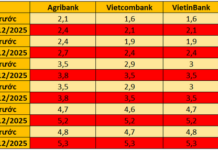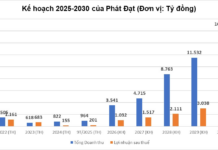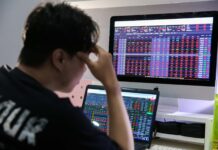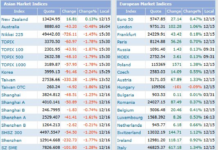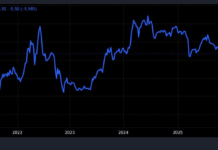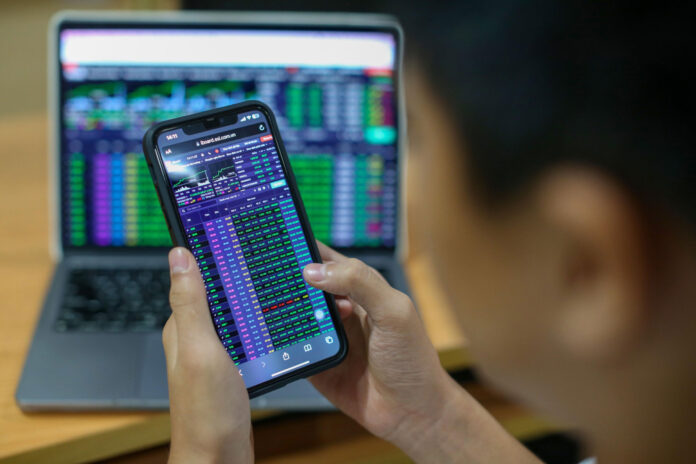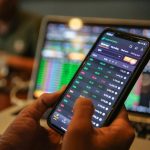The Vietnamese stock market has just experienced a positive trading week, with the VN-Index surging over 33 points and aiming for the 1,290 – 1,300-point range, a previous high reached in July 2024.
A Week of Joy and Regret
The positive performance of the stock market last week was largely driven by the strong performance of large-cap banking stocks such as VCB, BID, CTG, and ACB. These stocks have been highly regarded by both investors and experts due to their promising growth prospects in the remaining months of the year.
According to reporters from NLD, banking stocks have shown positive momentum recently, contributing to the recovery of the VN-Index after a correction below the 1,200-point region in early August. In just one week, VietinBank’s CTG stock soared from the 30,000 VND region to nearly 35,000 VND, a 15% increase compared to the previous week. VCB, BID, and LPB were also among the banking stocks that performed well last week.
Investors holding NAB stock of Nam A Bank have seen a roughly 30% increase in its price since the bank distributed a 25% dividend in mid-July. Many investors regretted selling this stock during the market plunge in mid-July and early August.
Numerous investors have maintained their faith in banking stocks throughout the year. Mr. Nguyen Viet, a resident of Ho Chi Minh City and a stock market participant for almost a decade, shared that he continues to hold a significant amount of VPB stock of VPBank, believing in the bank’s growth prospects. While VPB stock has been trading sideways for the past year, it has the potential to surge once favorable conditions arise. Mr. Viet also mentioned that all his friends hold at least one banking stock in their portfolios, such as SHB, OCB, VIB, or TPB, anticipating a wave of growth after a prolonged period of narrow fluctuations.
Banking stocks are often considered “king” stocks due to their large market capitalization and dominant presence on the exchange, attracting the attention of numerous domestic and foreign investors. Ms. Tran Khanh Hien, Head of Analysis at MBS, predicted that banking stocks will be the focus of investment until the end of the year. Two key factors to watch are credit growth and enhanced provisioning. Credit growth is expected to reach the targeted 14% for the year, driven by increasing capital demands as the economy recovers.
However, there will be a significant differentiation in the capacity of banks to boost lending. Banks with high-quality assets and low non-performing loan ratios will have more lending flexibility. This trend was evident in the first half of 2024, with some banks achieving double-digit credit growth, while others only managed to increase lending by 2-3% compared to the end of 2023, coupled with loan loss coverage ratios below 50% and non-performing loan ratios above 3%.
Attractive Valuations
According to Ms. Hien, the banking industry’s profits are forecasted to increase by 20% and 30% in Q3 and Q4 of 2024, respectively, compared to the low base of the previous year. This implies that the valuations of banking stocks will become attractive, encouraging investors to buy.
“The P/B ratio of these ‘king’ stocks is currently at 1.5 times, lower than the three-year average. Banking stocks will be one of the spotlight sectors for investment narratives in the last months of the year,” Ms. Hien stated.

Experts predict that banking stocks could be the focus of the stock market in the remaining months of 2024. Photo: HOANG TRIEU
Mr. Barry Weisblatt David, Head of Analysis at VNDIRECT, also believes that banking stocks are one of the two sectors offering attractive investment opportunities for the rest of 2024. While the asset quality of some banks has declined recently, it is expected to recover as the economy improves. Additionally, new laws related to the real estate market that came into force on August 1 will make it easier for banks to realize value from collateralized assets.
“Expectations of robust credit growth, surpassing the 15% target set by the State Bank, will boost banks’ income. Moreover, if the Federal Reserve cuts interest rates, it will ease pressure on the USD/VND exchange rate, reducing the likelihood of high-interest rates. Banks are currently trading at attractive P/B ratios compared to the five-year average,” Mr. Barry Weisblatt David assessed.
Regarding non-performing loans, Mr. Quan Trong Thanh, Head of Analysis at Maybank Securities, noted that the total non-performing loans of 17 listed banks increased by 6% in Q2 of 2024. The non-performing loan ratio at the end of Q2 for the banking system was 1.97%. The majority of overdue loans originated from small and medium-sized enterprises in the commercial, steel, and retail industries, mainly due to mortgage lending and consumer finance, which led to an increase in non-performing loans.
“The non-performing loan position of banks appears to be significantly lower than initially feared. Compared to regional peers, such as Thailand and Indonesia, this non-performing loan ratio is not excessively high. In fact, 11 domestic banks still have acceptable non-performing loan ratios,” Mr. Thanh analyzed.
Deposit Interest Rates Continue to Rise
Maybank Securities’ recent industry update report indicated that the high interbank interest rates have had a spillover effect on deposit interest rates. Many banks have shifted to mobilizing more deposits from customers instead of relying on interbank borrowing.
Maybank’s experts predict a further increase of 0.5 percentage points in deposit interest rates until the end of the year due to the slight uptick in credit growth. This increase is reasonable and is not expected to significantly impact banks and the economy in terms of funding costs.
However, according to some financial experts, banks’ net interest margins are unlikely to improve in the remaining quarters of the year. While input interest rates have risen, output lending rates have not kept pace with this increase, as they are expected to remain at current levels. This is due to the efforts of regulatory authorities and banks to support businesses in accessing capital.








